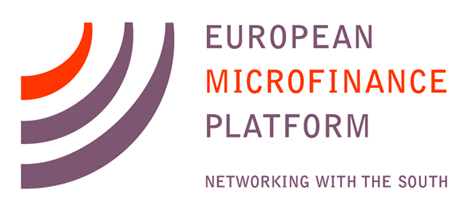MicroCapital : How is it different evaluating lenders to SMEs versus microlenders?
: How is it different evaluating lenders to SMEs versus microlenders?
Lucia Spaggiari: One difference is the language used. For instance, SME lenders speak of “sustainable performance” more than “social performance.” Beyond language, a key difference is scale. By definition, SME lending requires a larger balance sheet, and this means complying with prudential regulation and attracting investors expecting to earn (at least) market returns.
Laura Foose: Based on investor demand expressed at the European Microfinance Platform (e-MFP) Investor Action Group meeting at European Microfinance Week 2016 and the March 2017 Social Performance Task Force (SPTF) Social Investors Working Group, we have been exploring how best to evaluate the environmental and social performance of SME finance institutions. We began by mapping the ESG frameworks of four development finance institutions (DFIs) and then surveyed our member microfinance investment vehicles to learn what indicators were most important to them. The high quality of the DFIs’ tools was very helpful in designing an evaluation framework that is feasible for our member funds’ smaller investments.
MC: What types of social measures do you consider?
LS: In SME lending, the concept of “social” encompasses a broader group of stakeholders: in addition to clients, the assessment needs to cover the employees of the SMEs financed as well as the communities in which the SMEs operate. Compared with the missions of microlenders, which often focus on the financial wellbeing of the client, SME lenders are more oriented toward economic growth and job creation. However, client protection indicators remain very relevant. They also happen to be similar to the indicators we use to measure how SME lenders treat their personnel.
In general, the assessment framework of social performance management (SPM) for microfinance institutions – although we think in terms of sustainable performance management – remains applicable. This includes its structure of defining goals, aligning systems, benchmarking and making improvements. However, we must adjust for the different development goals of SME lenders and their broader scope of stakeholder groups.
MC: What issues arise when considering environmental performance?
LS: The bar for managing environmental performance is much higher for SME lenders than for microlenders. It requires the systematic use of assessment and improvement tools that are specific to each sector, geography, enterprise size and other contextual factors. MFIs often have no screening system at all, or they simply consult a list of excluded activities. Most MFIs that are moving into SME lending will need to acquire a significant amount of new expertise in this area.
MC: How do these factors fit into the existing SPM ecosystem?
LS: While the aspirations, operations and risks of SME lenders are different in some ways from those of microlenders, the SPTF Universal Standards and the Smart Campaign’s Client Protection Principles largely remain applicable if we adjust the bar, enlarge the scope and adapt some of the language.
LF: The end goal of this work is to create a module for SME finance within the SPI4 tool which is in broad use by investors with their microfinance portfolios. As investors expand their portfolios into SME finance, this would allow them to continue using the same tool with which they have already developed familiarity and confidence.
Lucia Spaggiari serves as the business development manager for MicroFinanza Rating and leads the e-MFP/SPTF project through which she drafted a framework for evaluating the social performance of SME finance. The final paper will be released during European Microfinance Week 2018. Laura Foose is the executive director of SPTF.
This sponsored feature is the first in our 2018 series on European Microfinance Week, which will be held from November 14 through 16 in Luxembourg by e-MFP, a network of 130 financial-inclusion stakeholders. MicroCapital has been engaged to promote and document the event.
Sources and Additional Resources
European Microfinance Week 2018
http://www.e-mfp.eu/european-microfinance-week-2018/information
MicroCapital Coverage of European Microfinance Week Since 2012
https://www.microcapital.org/category/european-microfinance-week/
Similar Posts:
- SPECIAL REPORT: Investors, MFIs Continue to Wrestle with Sustainable Finance Disclosures Regulation (SFDR) #EMW2023
- SPECIAL REPORT: Green Action Group Celebrates 10th Anniversary at European Microfinance Week #EMW2023
- SPECIAL REPORT: European Microfinance Week 2023 Opens With Action Group Meetings, Including Investors Sharing Strategies for Measuring Social Performance #EMW2023
- SPECIAL REPORT: e-MFP Launches the Green Map, a Pioneering Resource to Address an Information Gap in Green Inclusive Finance
- MICROFINANCE EVENT: European Microfinance Week; November 15-17, 2023; Luxembourg
